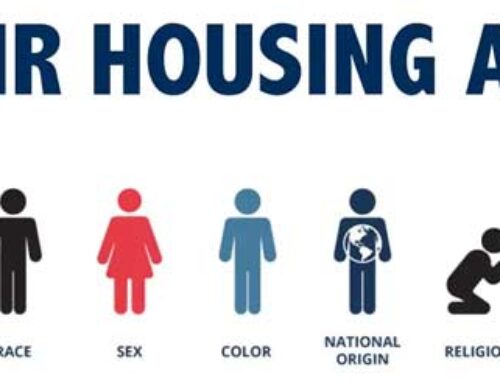By Kimberly Dawn Neumann
Nov 2, 2021

You probably don’t let strangers wander through your house checking out bedrooms and opening refrigerator doors on a random Tuesday, right? Yet when you decide to sell your home, letting outsiders inside is a very necessary part of the selling process.
That’s why ensuring your own safety while giving would-be buyers proper access to your home is of critical importance.
“The way you live in a home is not the same way you show a home,” says Cara Ameer, a real estate agent in California and Florida. “There are definitely safety precautions that you should take.”
With that in mind, here are the top eight tips from real estate agents and safety experts to keep you, your home, and your valuables protected when you show your home. (And get it sold, to boot!)
1. Beware of ‘For Sale’ signs
You may be in some danger the second you put a “For Sale” on the lawn.
“Scammers will notice,” says Robert Siciliano, CEO of the security and safety education company ProtectNow.
To protect yourself, Siciliano recommends you include lawn signage indicating you have a home security system. If you don’t, consider investing in a video surveillance doorbell, typically a deterrent for would-be thieves.
Even without a seller posting signs, aggressive buyers may try to take a look without being scheduled to do so.
“In today’s heated markets with low inventory, the minute a property hits the MLS, buyers and agents may disregard protocol and see if they can get into a home,” says Ameer. So a “Do Not Enter” sign on the edge of your property may also be necessary.
2. Hide everything pricey, personal, and potentially perilous
“Consider moving any items that are valuable, fragile, or significant to a trusted family member or friend’s house or a secured storage facility for safekeeping,” says Ameer.
Also stash away medications, credit cards, computers, and any bills/records that might contain personal information. And remove items that could cause harm.
“From a security standpoint, many common objects can be used as weapons,” says former Secret Service agent Melanie Lentz, author of “Advance Work: a Personal Protection Assignment.”
A beautiful knife set might look amazing for home staging purposes. But it’s probably not a good idea to leave it out for showings.
3. Show by appointment only
Aside from open houses—which are conducted during a specific and limited time frame—make showings by appointment only.
“All appointments should be cleared and confirmed in coordination with your agent,” says Ameer.
Various appointment management systems notify the seller and the listing agent by text, email, or phone when an agent requests an appointment. Only agents that are active and in good standing can request showings, which adds a layer of protection for you.
4. Don’t show alone
All the experts agree—don’t show your home alone.
“There should be at least two people observing, especially if the home has two stories,” says Lentz. “One real estate agent could generally observe, and either the listing agent or the owner can accompany potential buyers on the home tour.”
“Use the buddy system; strength comes in numbers,” adds Siciliano.
5. Protect your codes, lockboxes, and keys
Don’t give any garage or door codes out for showings.
“Instead, consider creating a specific code for showings instead of the one that family members use,” says Ameer. Then change the code every couple of days.
If the property has an electronic lockbox, have the listing agent program it so that you receive a notification the minute the lockbox is opened. That way you’ll know when someone is about to enter your property.
6. Ask for identification
“Request ID when people walk in,” says Siciliano. “If they have a problem, that’s a red flag and you need to tell them to leave.”
You should also be on alert if someone appears and claims to be a buyer’s agent.
“A buyer’s agent doesn’t usually show up unannounced,” says Chicago real estate agent Patrick McAloon. “Contact the agent’s office to confirm involvement with that particular real estate agency.”
7. Set open house limits
Open houses in occupied homes can certainly be a safety concern when it comes to managing crowds. Lentz suggests that you limit the number of people allowed in at one time. Have an agent at the door to monitor capacity.
If having a free-for-all open house makes you uncomfortable, Ameer suggests scheduling back-to-back showings in 15- to 20-minute increments.
“This is a less chaotic way to get maximum exposure and allows a buyer to take in the property individually,” says Ameer.
8. Control traffic
Before a showing or open house, identify all access points to your home (e.g., doors, windows, and gates).
“Then choose one that everyone should use,” says Lentz. For most homes, this is the front door.
Then find a way to securely lock all other access points. When entrance and egress access is controlled, no one can surprise you or sneak out the back door with your belongings.
Source- https://www.realtor.com/advice/sell/tips-to-protect-yourself-when-showing-your-home/






